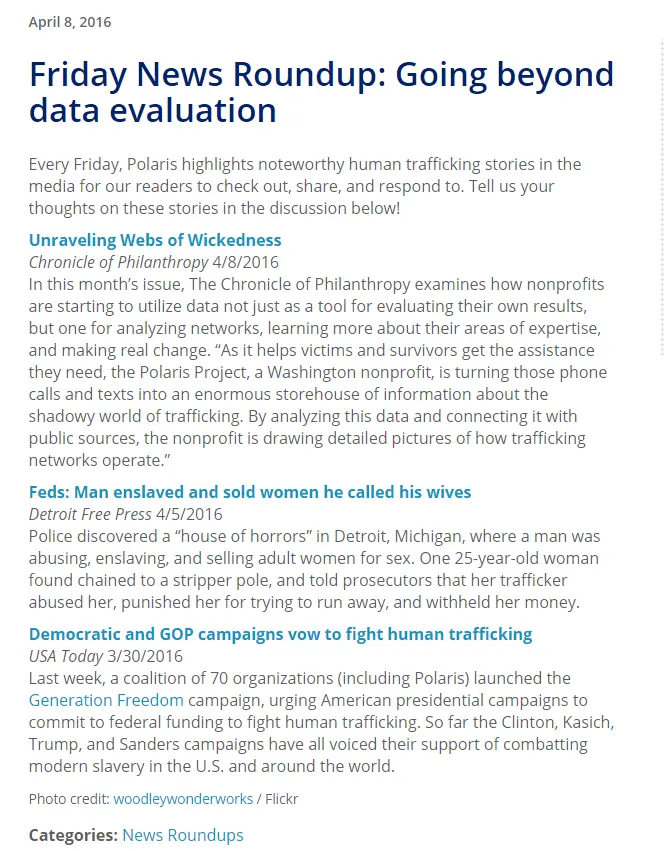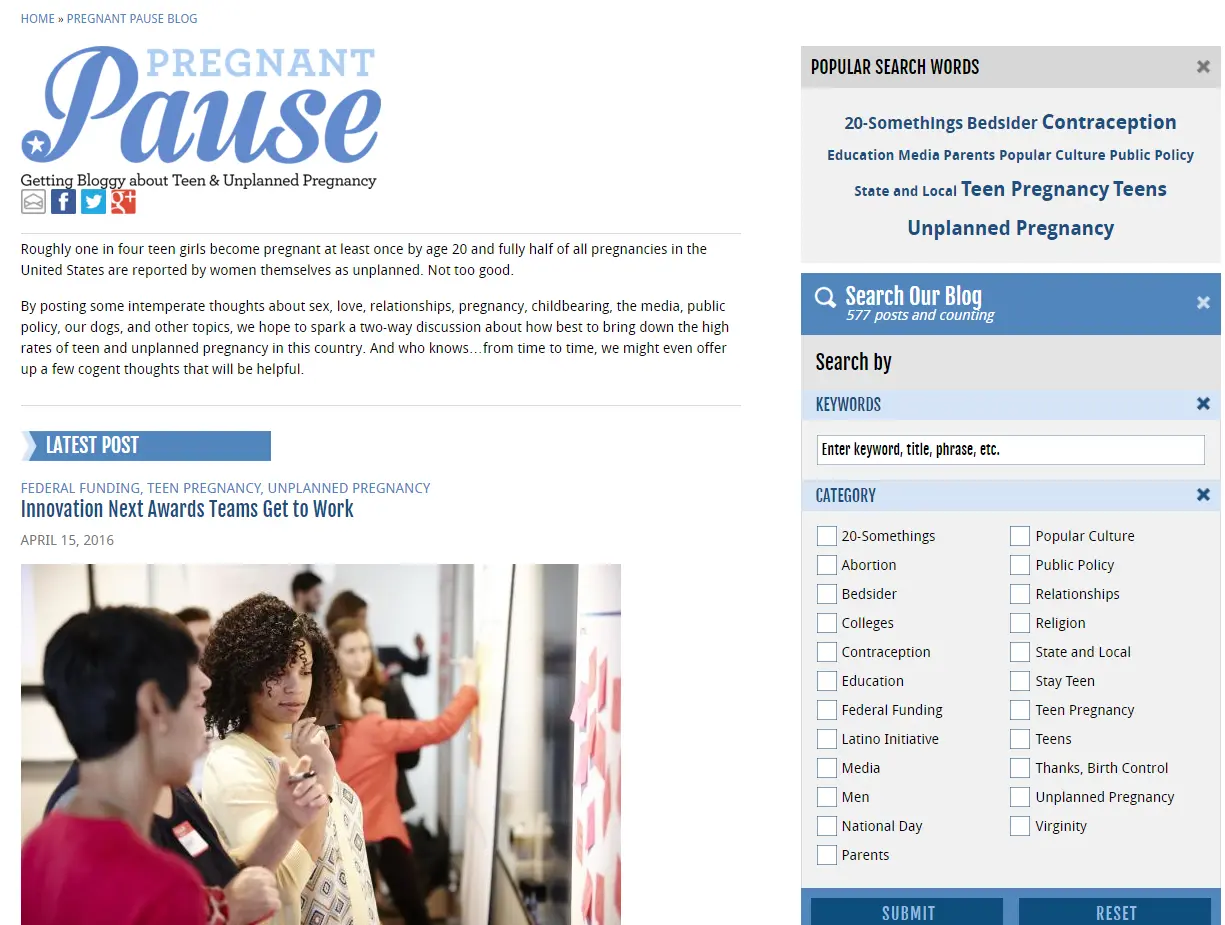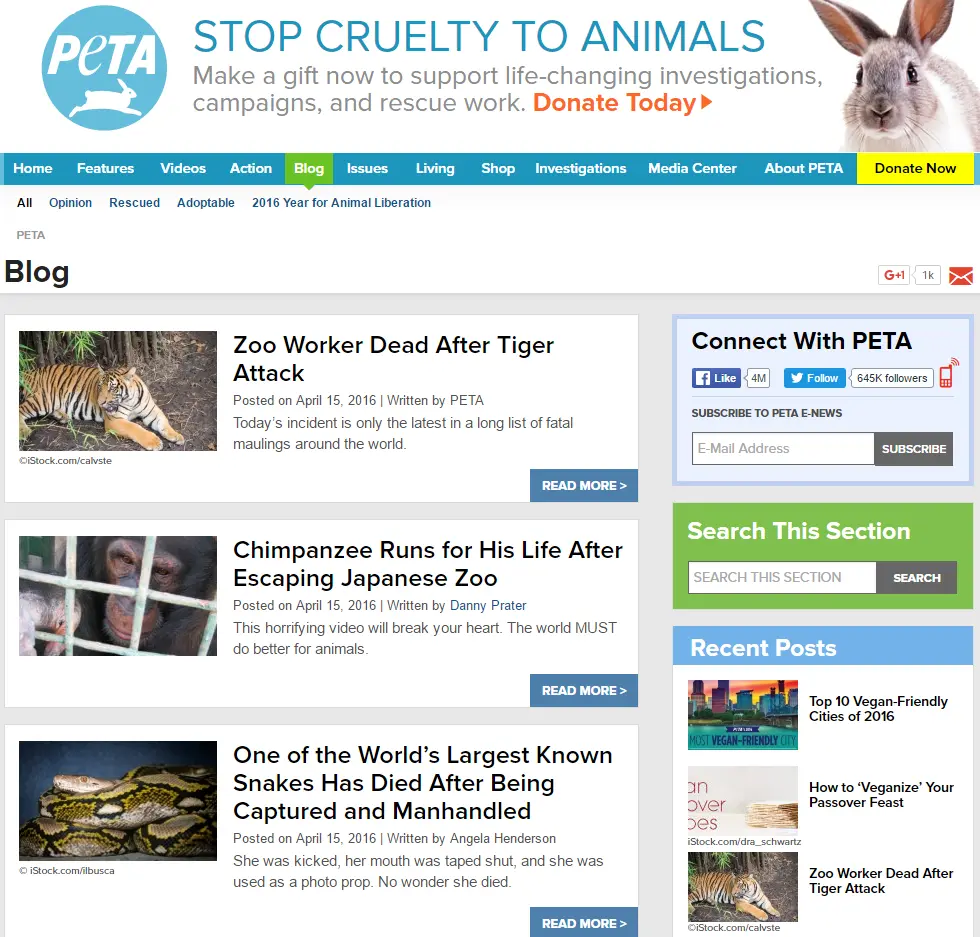What goes into making a great blog? Posting frequently is one thing. Great content is another. We’ve provided ways a blog can help your nonprofit website and tips and inspiration. But we’re going to take a page out of our own book, and be specific, actionable and (reasonably) brief in this post. We’ll look at some best practices and align those with examples of nonprofit blogs that are hitting it out of the park. Let’s get started.
Bringing Home the Impact: Amnesty International
For nonprofit websites that don’t have a page specifically devoted to showcasing their impact, the blog is a great place to feature this important information. Amnesty International USA shows how the blog can be a great place for spotlights and personal stories. Providing in-depth, intimate stories about people is especially effective for an organization of this size, scope and scale. Their stories include updates on individuals, profiles of missing people, and features on award recipients. Amnesty International’s blog also maintains a fresh, diverse voice with an array of contributors that include staff, volunteers, and celebrity activists.

Utilizing Content Curation: Polaris Project
Content curation has a lot of benefits and a blog is great way to share external content. Polaris Project includes a weekly news roundup of stories about human trafficking on their blog. Their “going beyond data evaluation” headline says it all and highlights topical stories in a way that brings context and urgency to the issue of human trafficking. Curating content on your blog this way establishes authority and lets you share great content with your readers.

Reinforcing Your Voice: The National Campaign to Prevent Teen and Unplanned Pregnancy
There is so much to love about National Campaign’s blog. Let’s spend a second on the name of their blog. It’s called Pregnant Pause: Getting Bloggy About Teen and Unplanned Pregnancy, and this genius title really captures the spirit of the content.
In the introductory text, the National Campaign sets the tone in a refreshingly honest and accessible voice that undoubtedly resonates with many teens. They do a fantastic job of establishing the point of their blog (which could really be a boilerplate for any nonprofit): to spark conversation, talk candidly about this topic, and foster awareness.
I also can’t say enough about how well-organized and robust this is. Their blog categories are great; from “Popular Culture” to “Public Policy” and “Latino Initiative” to “20-Somethings,” this really captures the scope of their work. There’s also a helpful Popular Blog Posts and Popular Search Words to give people a nudge in the right direction and a starting point.

Versatility: PETA
PETA shows how versatile a blog can be in terms of the type of content you can offer your readers. PETA injects levity in their blog (“9 Animals Who Are Better at April Fool’s Day Than You”) as well as covering heavier news that is at the heart of their mission (“Singer Dies After Bite From Cobra Used in Her Show”). They also feature blog posts that are actionable, from how people can stop seal slaughter to promoting a $5,000 reward to help catch someone who committed animal abuse.

When you have some time, browse through these blogs for a closer look at how they’re illustrating these best practices.
Have any other examples of nonprofits with great blogs? What makes them stand out? Let us know in the comments below and be sure to include a link!

Hey,
https://blog.givecentral.org/ have amazing stuff on their blog please check them out. They have content related to nonprofit fundraising, year end donations, online giving best practices
etc.
Thanks!!
Thanks for sharing, Juhi. I’m looking forward to checking it out!